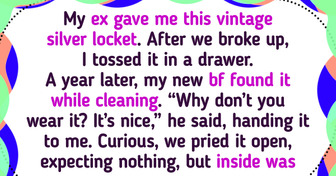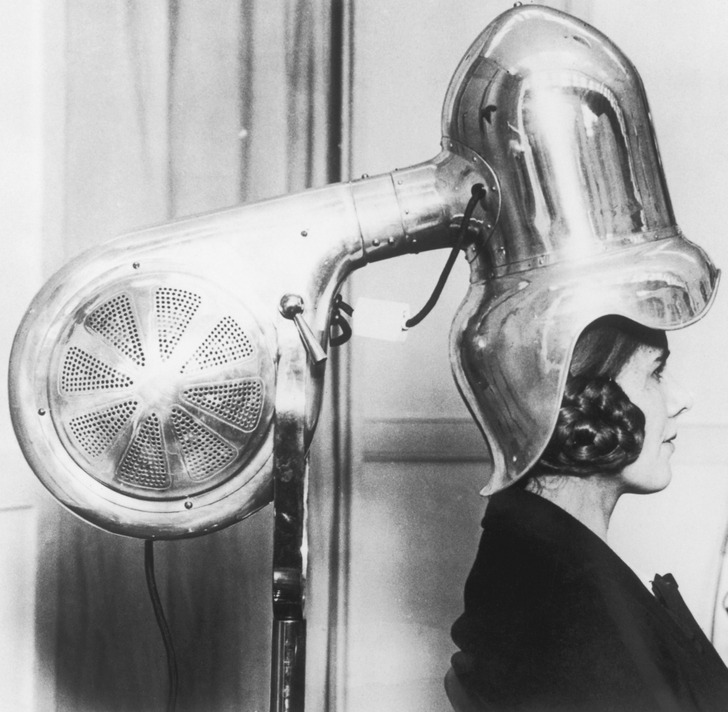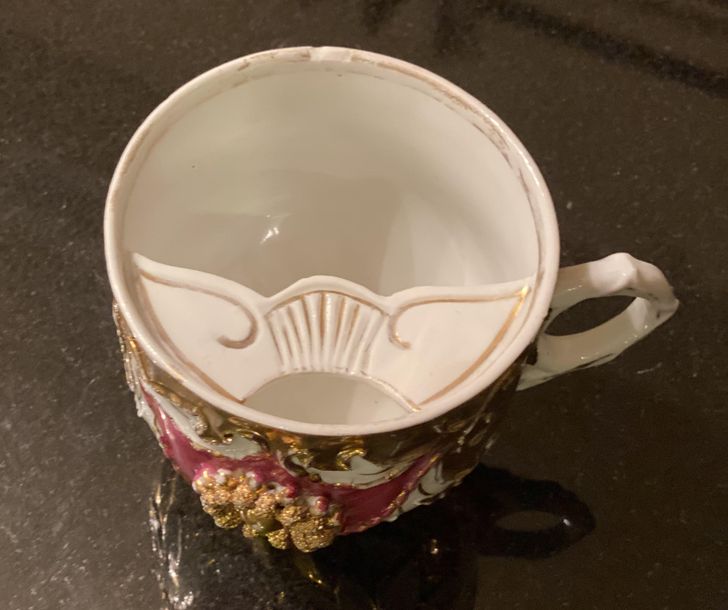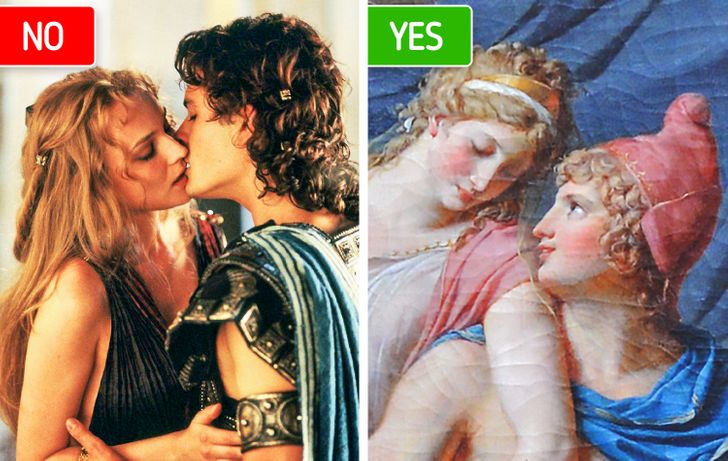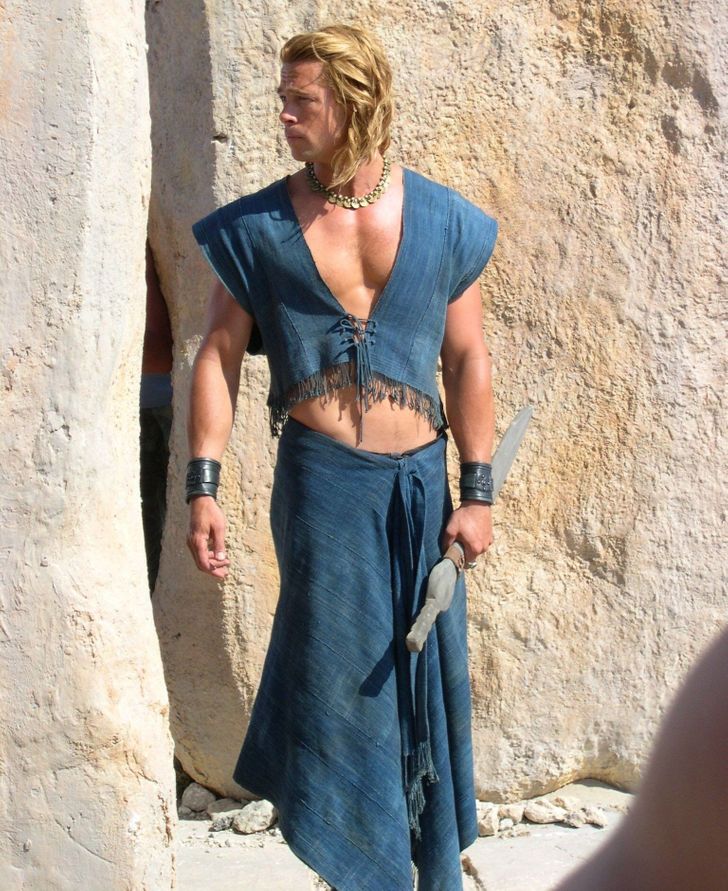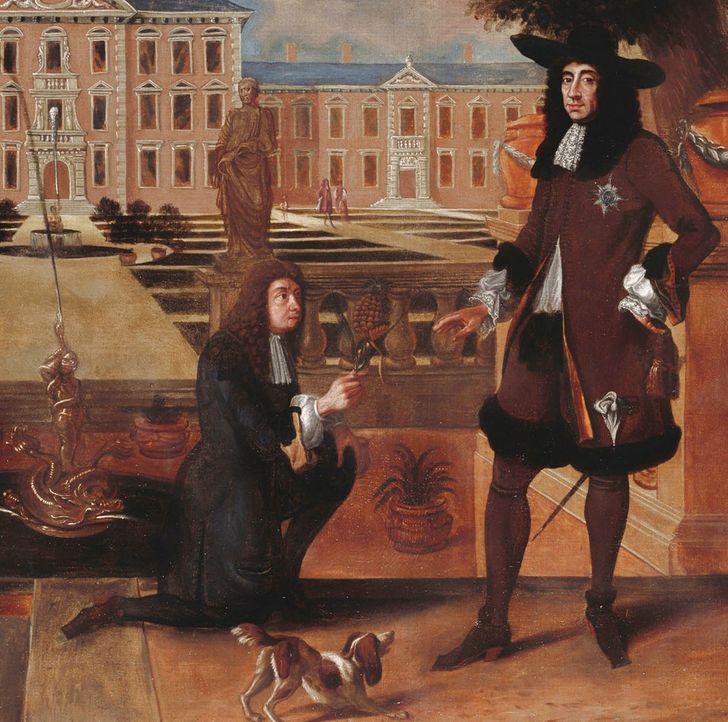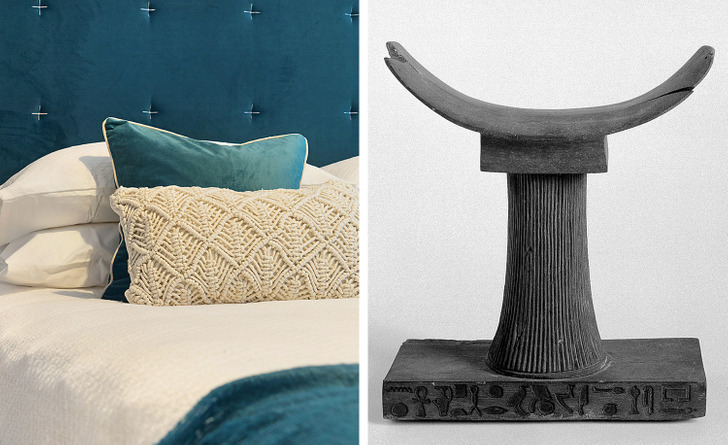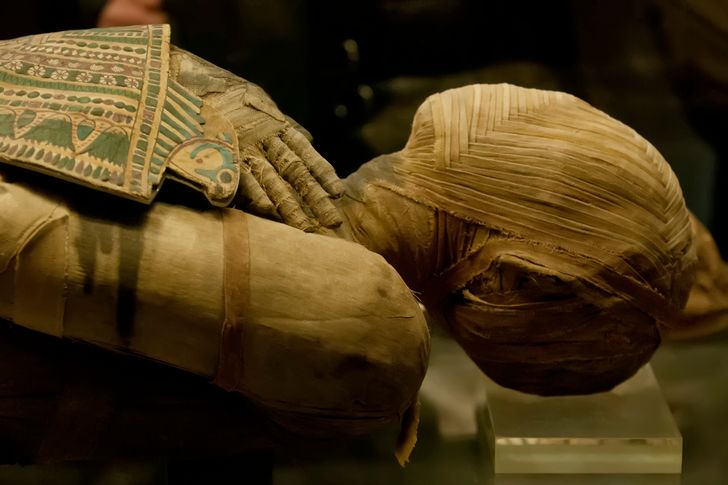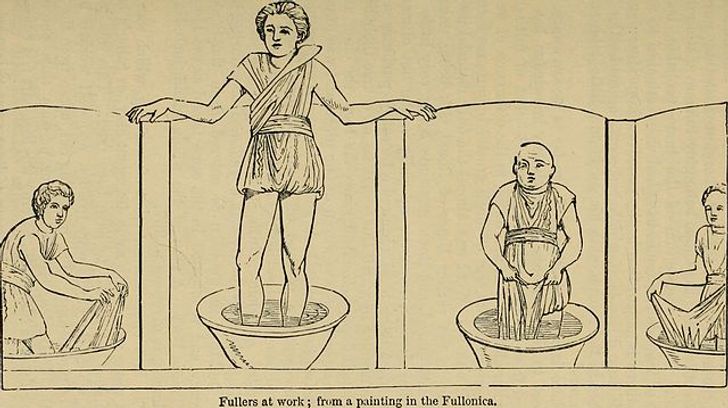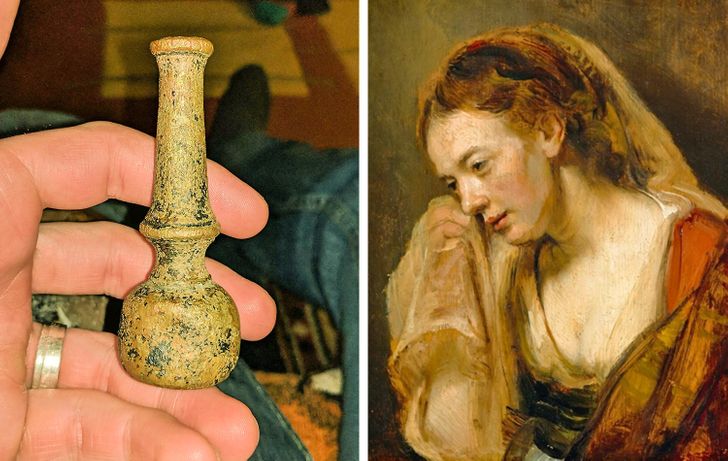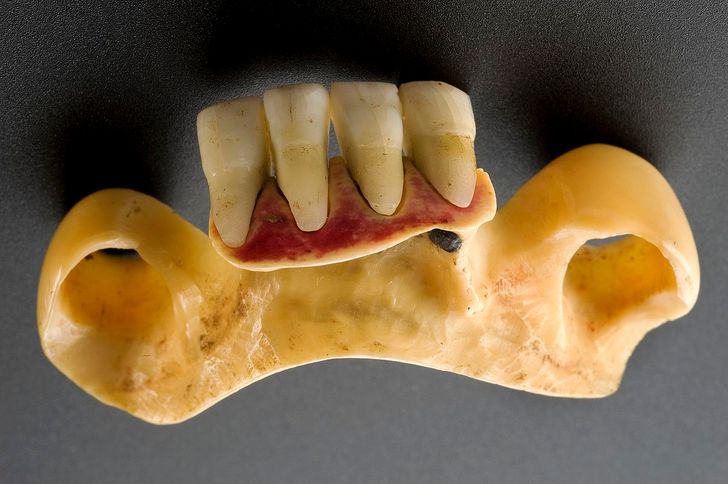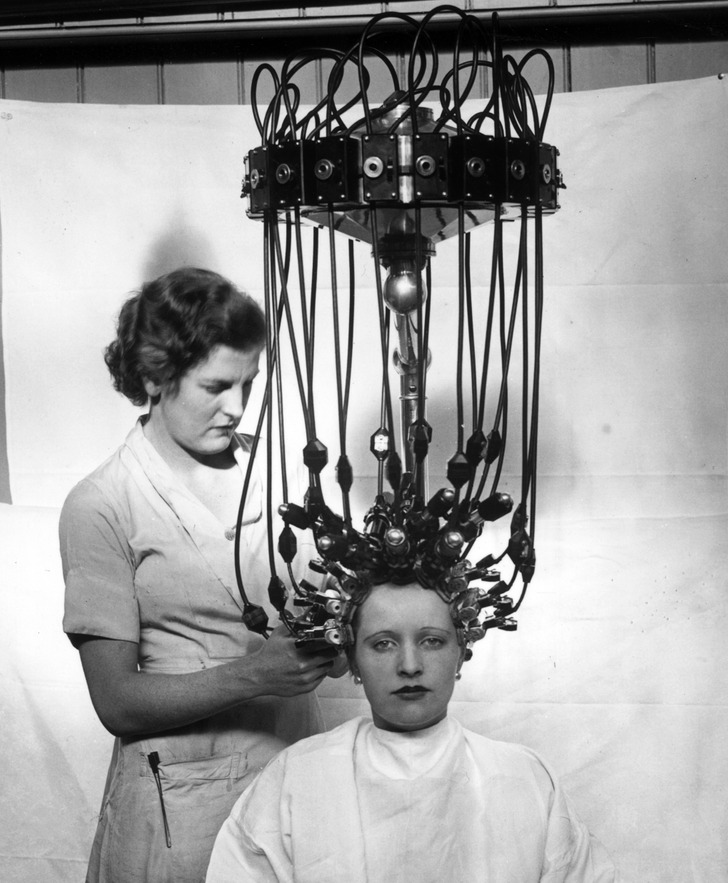I would want to try this "ketchup" haha
14 Common Things That Used to Look Very Different in the Past
There is a certain romanticism many people associate with history, mostly due to movies like Troy, Gladiator and TV series like Spartacus. But if you truly study history, you’d come across some bizarre practices, like washing clothes in urine or lugging around a pineapple to parties but not eating it.
Bright Side collected these and more of history’s strangest practices to shine a spotlight on our ancestors.
1. How hair dryers were in 1928
The invention of hair dryer dates back to the nineteenth century, when French stylist, Alexander Godefroy, introduced it in 1890. Back in the day, they used to be large and could only be used in a seated position. A smaller, handheld version was finally introduced to the market in the 1920s, paving the way for the modern hair dryers we use today.
2. Victorian men drank their tea in special mustache mugs.
In the past, if a man loved his whiskers and tea with equal fervor, there was a cool solution. A little mug was made just for gentlemen with mustaches, known as the mustache mug. Think of it as a sippy cup for men with fancy facial hair.
British potter Harvey Adams is said to have cooked up these cups in the 1870s. And they became so popular, he retired within 15 years.
3. Ancient Greek men didn’t kiss their wives.
In Ancient Greece, kissing was more a sign of respect than romance. Men who were equals would kiss each other on the lips, else the cheeks would be kissed. Kissing between men and women was frowned upon, mostly because women were not considered equals.
4. For the Greeks, skirts were manly, not trousers.
For Greek men, skirts, tunics, and togas were what real men wore. For them, pants were something worn by Persian barbarians. In fact, pants were considered feminine and a source of great ridicule. This is the reason why Brad Pitt rocked skirts in the epic film, Troy, when he played the muscular Achilles.
5. Pineapples were considered a status symbol.
Once upon a time, long before Del Monte decided to package the pineapple in sugary water, the fruit was considered way too valuable to eat. Each pineapple was worth thousands of pounds and would be carried around by the wealthy in the sixteenth and seventeenth centuries until finally it rotted away and had to be thrown out.
6. Ancient Egyptians used wood or stone pillows.
Forget plush, back in Ancient Egypt and even China, pillows were made of stone, wood, or even porcelain headrests. Since the people of those times slept on the floor, pillows or headrests were used to raise the head off the floor for protection from insects.
Comfortable or not, these stone pillows served a purpose. They were also used in graves where the heads of the deceased were kept on them because this body part was considered sacred.
7. In the nineteenth century, ketchup was sold as medicine.
If you could travel back in time, the one thing that could be considered radically different would be ketchup. Back then, it contained ingredients like mushrooms, onions, and spices, but no tomatoes. The origin of ketchup can be traced back to the Oriental, but today, it’s as international as any food could be.
And there was a time when ketchup was actually sold as medicine, by a gentleman named John Cook Bennett. The all-new tomato content was the key to its healthy properties, and the ketchup medicine empire expanded rapidly. But with inferior-quality copycats emerging, it collapsed in 1850.
8. In the sixteenth century, mummies were medicine.
Ancient Egyptian mummies have inspired many tales and movies as well. While mummies are scary and evil in many films, in ancient times, they were considered medicine. Ground-up mummies were actually consumed as medicine in the twelfth century, mostly because of the bitumen content in them.
A lot of the brown shading seen in paintings also came from mummy powder. Apparently, one mummy was enough pigment to sustain many artists for decades to come.
9. Knights were “ordered” to bathe, at least for knighthood.
Hollywood may depict medieval times as romantic, but frankly, it stank. Mostly because bathing was not so much a practice as it was something to be done, in case you were going to do something important, like be knighted, which is exactly how the Order of the Bath came to be.
You had to take a bath before the knighting ceremony so at least for one day, the men smelled good.
10. For Romans, urine was a great cleanser.
For most, pee is just human body waste. But for the Romans, it was a source of ammonia, which, in turn, is considered something that can clean very well. So, according to many frescoes found in Pompeii, dirty clothes would be soaked in stale urine to clean them of grime, oil, and stains.
The laundry workers of the time, called fullers, would stomp on urine-soaked clothes in tubs, as shown above.
11. Love was proven by bottling tears, literally.
Tear catchers can be traced all the way back to 400 B.C.E. Women kept the tears they cried for their husbands, dead or at war, in special bottles, also known as lachrymatory bottles. Basically, the more the tears, the more pure and pious the woman. Later, these bottles were used to store perfumes and oils.
12. Dentures were once made of real teeth.
Today, dentures are made artificially, with materials that cause no harm and can last a long time. But centuries back, if you lost your teeth, you could get new real ones.
In earlier times, dentures were made from real human teeth and were called “Waterloo teeth.” It is said that the teeth from battlefield casualties were often used to make dentures. But you could buy teeth from living people as well.
13. Gladiator sweat was a prized commodity among Romans.
If you were an ancient Roman woman who wanted to look pretty, then the beauty potion of choice was gladiator sweat. Once the gladiators fought, the sweat, blood, and grime would get scraped off their bodies and sold in vials outside the arena.
While rich women could afford creams and perfumes, gladiator sweat was a beauty treatment for middle-class women as well.
14. A perm machine in 1935
An early alternative method of perming was invented by German hairdresser, Karl Nessler, in 1905. In those days, his method involved brass rollers connected to a heating device, and sodium hydroxide was applied straight to the hair. Since then, the method had been continuously improved up until the 1970s, when the acid perm was introduced. Nowadays, digital perming is still widely used, especially in Asia.
So which of these facts managed to surprise you the most? Do you also know of weird ancient practices from your side of the world?
Subscribe to our podcast on Spotify or Apple podcasts to enjoy our best stories and give a real treat to your ears.
Comments
I'm so happy I was born in the modern times 😂
Related Reads
20+ Photos That Might Urge You to Clean Something Right Now
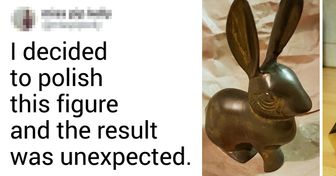
10 Seemingly Necessary Items We Buy During Pregnancy That in Reality Just Waste Our Money

20 People Who Know All Too Well How Hard Mornings Can Be

15 Inventions That Made Us Yell, “Shut Up and Take My Money!”
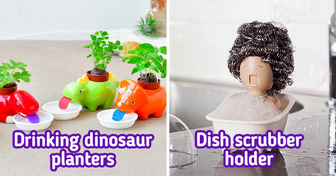
17 Famous Men Whose Wives Are Truly Gorgeous

15 Phrases That Parents Should Avoid When Talking to Their Children

14 People Who Made Disturbing Discoveries About Their Partner Years Into Their Relationship

14 Disturbing Truths That Ruined People’s Trust

My Stepchildren Refuse to Accept Me, So I Laid Down the Truth They Didn’t Want to Hear

27 Savage Kids That Will Make You Giggle

My Wife Told Me She’s Pregnant, but She Doesn’t Know I’ve Actually Had a Vasectomy

15 Stories of Exes Who Can Turn Your Life Into a Nightmare
